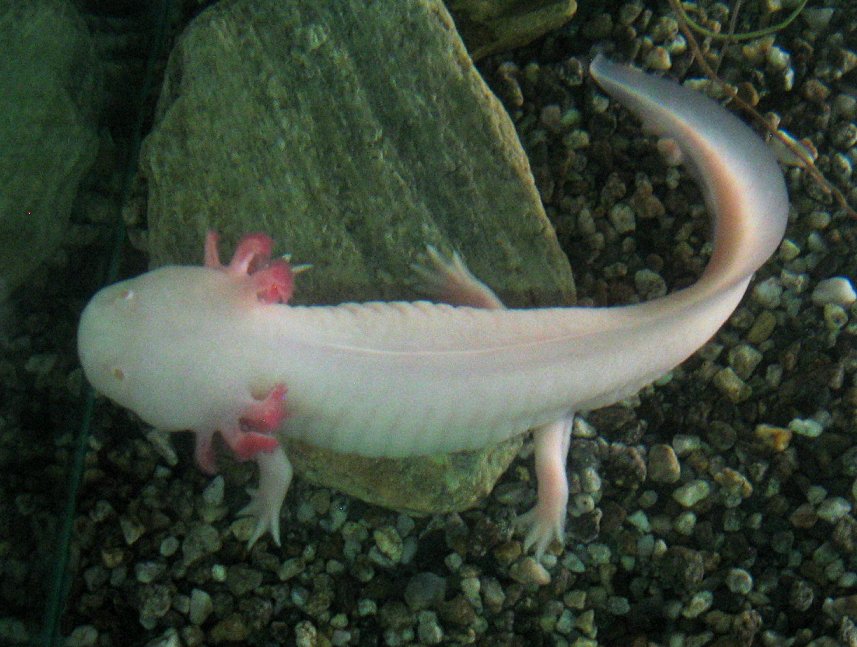

Ambystoma mexicanus
The Axolotl lives in some lakes close to Mexico City. This species is
approaching extinction due to pollution and the expansion of the city and even
because this animal is used for traditional medicine purposes. They are also
sold in Mexican markets, and were part of the Aztec diet.
Axolotls have four different colours, two naturally occurring colors and two
mutants. The two naturally occurring colors are "wildtype" (varying shades of
brown usually with spots) and melanoid (black). The two mutant colors are
leucistic (pale pink with black eyes) and albino (golden, tan or pale pink with
pink eyes).
The larvae of this species does not undergo metamorphosis, so the adults remain
aquatic and gilled, a condition called neoteny or juvenilization.
However, it is known that axolotls can be induced to metamorphose by an
injection of iodine. Axolotls use their external gills for breathing, although
they can also gulp air form the surface of the water so to take oxygen to their
lungs. They are also able to regenerate whole limbs in a period of months, and
some have even been able to regenerate some parts of their brains. The
regeneration ability is largely lost in axolotls that have been artificially
induced to metamorphose. Because of these features, the axolotl is used as a
model for the development of limbs in vertebrates.
The above picture was taken in Thessaloniki, in July 2012.
Genus Ambystoma
Family Ambystomatidae
Suborder Salamandroidea
Order Caudata
Class Amphibia
Subphylum Vertebrata
Phylum Chordata
Kingdom Animalia
Life on Earth
Index